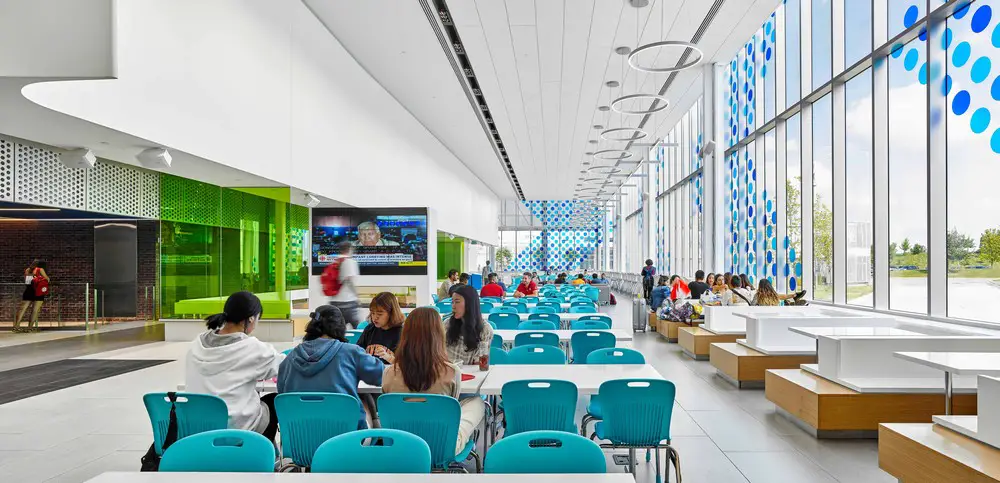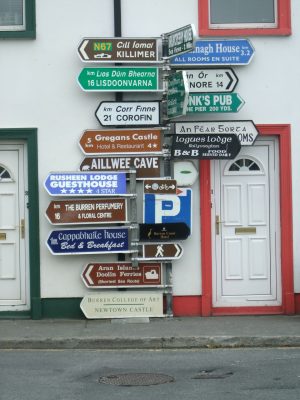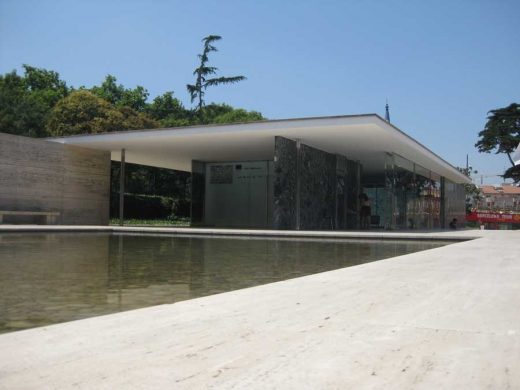Essential Factors in Architectural Signage Advice, Signs Guide, Brand Tips
Here Are Essential Factors in Architectural Signage
26 Oct 2020
You see it everywhere, and yet, most people don’t really know what they are called. Architectural signage is a term used in the signage industry to define the signage that brands, companies, and places use to name a specific building or location. It tells you where to go, what a specific building is, or how long a location is from where you are. Architectural signage has a broad and extensive use to cover various signage that’s important and unique to municipalities, locations, buildings, businesses, and more.
A single definition might not convey the magnitude of elements that cover architectural signage. For some, architectural signage is merely for advertising and marketing purposes, while for some, it’s a way of showing where a specific location is. In most cases, architectural signage carries various reasons and importance, whether it’s to tell people where you’re located, the name of your company, your brand, and so on.
However, there’s one distinctive element in architectural signages. They are always physical, and they are man-made structures. Facilities and locations use this signage from offices to parks, government organizations to campuses, schools to galleries, buildings, and beaches.
It’s crucial for buildings to maintain a professional appearance and to ensure easy navigation. Architectural signage is there for a reason, and companies that don’t invest in this are missing out on business. How else would people find your physical office? Sure, there are online maps that point you in the right direction, but how will you know which is the right building or office location?
Essential Factors in Architectural Signage Guide
If you’re looking to make architectural signage for your brand, here are important factors to look out for:
- It needs to be custom-made.
Architectural signage comes in many shapes and forms. If it’s focused location-based architectural signage, it needs to be uniformed in look, so that people immediately recognize it as location signages pointing them in a specific direction. However, suppose it’s signage specifically pointing out that this specific cubicle, building, or floor belongs to your company. In that case, your architectural signage needs to be custom-made because you want it to mirror your branding. It needs to be consistent with your brand logo, image, and offline and online presence.
- It needs to signify your brand.
Brand identification through logo and signage is essential. Think about Google and its headquarters. The words GOOGLE are huge and prominently placed on the main office of the headquarters in the colors of the brand. This is the kind of presence you want to go for. If your logo and brand use the color orange, then you want your architectural signage to mirror this as well or, at the very least, the typography. This is important because you want to maintain a professional appearance and create a unified design language. Your architectural signage needs to convey the same typography and representation of your brand.
- It conveys the decor of the building.
Architectural signage conveys a strong physical brand presence. Having signage that complements the environmental decor of the building your office is located in speaks volumes about your credibility. Are you serious about the work you do, the products you manufacture, and the services you provide? That passion needs to show up in your brand’s physical aspects as well, and customizing your logo to be in line with the building you’re located in shows that you share and value the architectural elements of the building.
- It needs to be visually attractive.
Well, this is a no-brainer. Attractive signage on a beautiful monument is both aesthetically pleasing and shows off your company’s prestige. The form should follow function and every signage serves a purpose. Signage isn’t just sculpturing and decorations. They are here to serve a purpose to your brand, company, and customers.
- It needs to show quality.
Quality means credibility. When people look at your signage, it needs to evoke specific emotions in them, such as prestige, trust, credibility, and friendliness – whatever it is your brand is all about. Suppose your company is about providing therapeutic spaces for people to seek solitude, have spa sessions, or do meditation and yoga, and your logo is a soft green lotus. In that case, your signage needs to evoke the feelings and emotions of calmness, solitude, spirituality, and space. Not only is the quality shown through the emotions you want to evoke, but using long-lasting materials is also vital. Maintaining your signage and repairs will cost you money, so trusting your signage needs to Architectural Signage Companies with the right expertise is crucial.
- It needs to be compliant with local rules.
Speaking about working with companies with the right expertise, you want to work with them because they know the rules and guidelines associated with architectural signage. Make sure the company you work with knows the OSHA and ADA requirements. Companies that have the expertise behind them would advise you on the rules, what’s allowed, what’s against municipality guidelines, and even propose methods and designs that are helpful for the visually impaired or physically disabled. Without compliant signage, your company runs the risk of being fined.
What’s the process of creating architectural signage?
Firms, companies, buildings, and basically any architectural project will require signage at some point in the business cycle. If you just moved into a new building, and you’re looking to make your presence known through your architectural signage, here’s the basic process explained. Take note that different companies will have different processes, but generally, it follows:
- i) Analyzing your location and the competition
- Architectural signage companies will meet you at your office location to determine what guidelines and rules apply at the building and municipality levels. From here, they will determine the size requirements for the signage and recommend the best strategy ahead.
- ii) Mockups of designs and solutions
- The design company will then develop some design solutions to cater to your brand needs, guidelines, and local regulations. Your job here is to see which design stands out to you, meets your branding needs, and speaks the same language conveyed on other platforms.
iii) Proposing affordable design solutions
- The designs proposed will often come with affordable and innovative materials proposition that meets the interior and exterior signage solutions. Professional companies will be able to propose a vast array of materials and design aesthetics that are built to last long with minimal maintenance, giving you options for the best size and design that fits the location, environmental factors, and local regulations.
- iv) Integration of brand identity
- As the client, you need to ensure that the designs proposed align with your brand identity. This is often a two-way process. You’re the guardians of the brand, and the designers will create designs that match this guideline, but sometimes, they may miss out on specific elements, which is why you need to ensure that your brand’s integrity is protected.
- v) Installation and placement
- Once both parties have agreed on the best signage solution, and the invoice has been drawn, the next step would involve installation. Good companies often provide a certified installation team and a network of professional installers to provide you with a seamless onsite application.
- vi) Optimization of signage
- The company designing and installing your signage would also help you identify the best placement for your signage. This is, of course, after discussions with you, the client. When everyone has agreed, the company will proceed to install your signage.
The Importance of Architectural Signage
The primary goal of signage indeed is to help people get to where they want to go, but for companies, it’s also about boasting brand enhancements and key destinations. In our world today, cities and places are easily and quickly navigated with smartphones and navigational tools, from Google Maps, Waze, Citymapper, to Google Earth.
However, architectural signage from a Cincinnati business sign maker is still crucial beyond basic navigation. It provides identity and information that can be seen through elements such as monuments, directional systems, directories, interpretive, and even regulatory signs that enrich our experiences with urban environments.
Even in the age of smartphones and GPS, architectural signage strengthens a brand’s presence by improving navigation, legibility, accessibility, and understanding of the brand, the company, and its environment.
Here are other advantages of having architectural signage:
- Reinforce a company’s defining history, architecture, and landmarks.
- Give areas, districts, and destinations that aren’t very prominent a much-needed boost.
- Help the public, especially the differently-abled, to find parking, improve traffic flow, and ease the transition between car, pedestrian, and transit use.
- Lessen visual clutter with clear, consolidated, and on-brand information and identity.
There you have it – the factors that are essential in architectural signage, the processes involved in creating one, and finally, convincing you why you need to invest in it. Architectural signage is as important as having a website for your company.
Comments on this Essential Factors in Architectural Signage advice article are welcome.
Signage and Banner Design
Banners Posts
Why you need a logo for your business
Top 6 Benefits of Using Banners for Advertising Your Business
Building Articles
Comments / photos for the Essential Factors in Architectural Signage Guide page welcome







